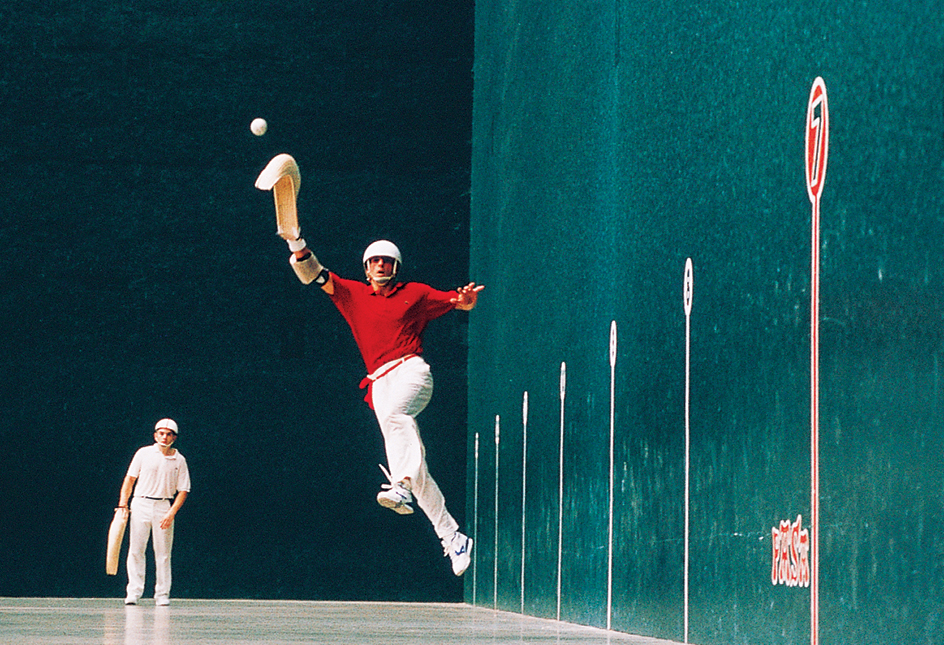Jai alai, << HY ly, >> is a fast and dangerous game that resembles handball. The sport is also called pelota. Players use a curved wicker basket to throw a hard ball against the front wall of a court. The basket, called a cesta, measures about 2 feet (60 centimeters) long. One end has a glove that fits the player’s hand. The other end is used for catching and throwing the ball. The ball, called a pelota, is slightly smaller than a baseball.

Jai alai is played on a three-walled court called a cancha. In the United States, a jai alai court has three walls and measures 176 feet (54 meters) long, 55 feet (17 meters) wide, and 40 feet (12 meters) high. Spectators sit along the open side of the court, watching the game through a clear, protective screen. A side may consist of one, two, or three players, though most games are played as doubles. Spectators often bet on the games.
To begin a game, the server hurls the ball from his cesta against the front wall. The opponent must catch the ball either before it hits the floor or on the first bounce. The opponent then hurls the ball against the wall, and the server must catch it and throw it back. The ball often travels 150 miles (241 kilometers) an hour and can injure or even kill a player. If the opponent misses the ball, the server scores a point. If the server misses, the opponent wins the serve. Points can be scored by either team. Seven-point and nine-point games are popular for betting. In international doubles games, called partido games, a team must score 30 or 35 points to win.
Jai alai originated from a game played in the Basque region of Spain and France during the 1600’s. The Basque words jai alai mean merry festival. Today, jai alai is a favorite sport not only in Spain and France, but also in Mexico and the Philippines. In the United States, jai alai first became popular in Miami.
